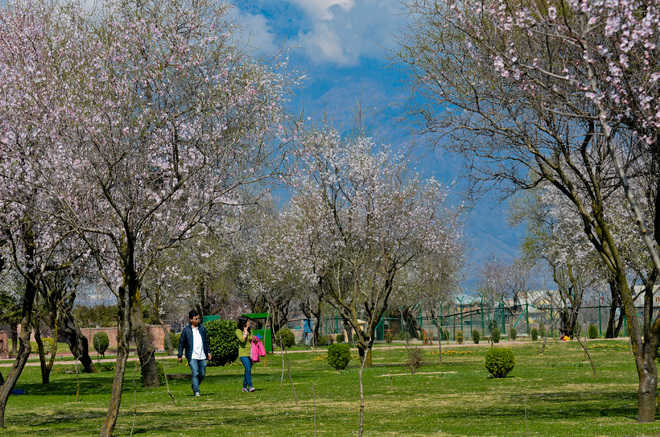Almond cultivation on verge of extinction, courtesy govt apathy
Farooz Ahmad Bhat
Pulwama, February 13
With every passing year, the almond orchards in south Kashmir’s Pulwama district are being axed for apples as the government has not shown any interest in promotion of almond cultivation.
For the past few years, the area under almond trees has declined as swathes of Karewa land, that was deemed to be the best for cultivation, has come under apple cultivation. Horticulture experts maintain their view about the huge scope of dry fruits in the district as Karewas occupy a considerable area here. While comparing almond and apple preferences, the government has been biased towards almond cultivation as no scheme has been launched to promote this dry fruit of immense value in the market.
“Apple growers have been provided innumerable incentives, including free of cost plants, fertilizers and hedge for some varieties, while almond growers have not been so fortunate, thus compelling us to axe almonds for apples, said Abdul Majid, a resident of Koil village in Pulwama. He added that almond cultivation would become extinct in coming years as everyone thinks apples fetch more prices than almond.
Meanwhile, Pulwama Horticulture Development Officer Irshadul Islam said so far early blooming had proved a deterrent to almond cultivation, although rates had also been an issue with its cultivation. “For me or any horticulturist, rates do not matter as they can fluctuate in the market but what matters is diminishing heavy fruit set after full bloom,” he said, adding that persistent temperature fluctuations were harming the crop most.










